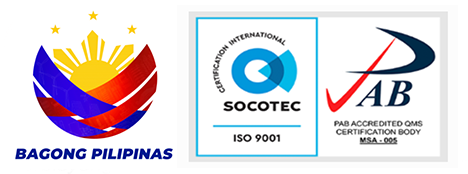“Mula sa tao, para sa tao,”
This is how Sabina Tipolo describes Kalahi-CIDSS. Brief yet powerful, the words resonate with truth and certainty.
The 54-year old seems to be always in high spirits, often interacting with other people in the community. She has been a volunteer for three decades already, starting her volunteer stint at the Tribal Pilipino Apostolic Missionary in 1992. She worked as a community organizer in the remote communities of Tagbanuas in the municipality of Aborlan. Surprisingly, she is a Tagbanua herself, with her parents being both native Tagbanuas. However, she had less exposure with the IP community as she was born and raised in Puerto Princesa City.
The perceived mentality of Tagbanuas towards outsiders compelled Nanay Sabina to teach and introduce them to non-formal education. Nanay Sabina taught values formation, legal, and religious matters. She started this in barangay Iraan, where she eventually met her husband and settled down.
In barangay Iraan, she held many positions such as barangay health worker, barangay sanitary inspector, barangay microscopist, and barangay embalmer. She is also the President of the Women’s Association for Banana Production in the barangay.
Added to her growing list of volunteer work is the Kalahi-CIDSS. She shared that Kalahi-CIDSS comes across as different, as the concepts of transparency and empowerment are being practiced and emphasized. Seeing people in the barangay inculcate these values give more meaning to what she aspires for the barangay. Her almost one-year experience with Kalahi-CIDSS gives her a lot of experiences to tell, hoping to enthuse the others as well as much as the project inspired her.
One of the things she realized then was the fact that being a volunteer in Kalahi-CIDSS is not easy. From the beginning, she knew that mobilizing the IP community to attend Kalahi-CIDSS activities would be hard. “Kahit yung mismong mga opisyal ay nag-aalinlangan kasi iba ang proseso ng Kalahi sa ibang proyekto, tapos sanay din ang mga tao dito sa dole-out,” Nanay Sabina remarked.
Despite these, Nanay Sabina worked hard together with the other volunteers who believe in Kalahi-CIDSS. However, the community of Tagbanua cannot fully engage themselves, as several were still apprehensive of the project. Hence, Nanay Sabina went as far as sharing her own resources to reach far flung communities together with the Kalahi-CIDSS Area Coordinating Team, to further convince them to attend and support Kalahi-CIDSS activities. Nanay Sabina continued to convince every household, doing house to house visits to personally explain the ideals of Kalahi-CIDSS and the benefits of the community sub-project once it got prioritized.
And their hard work paid off. Barangay Iraan’s farm-to-market road was prioritized during the Municipal Inter-Barangay Forum. By then, Nanay Sabina got even more aggressive and dedicated to lead the community in complying the necessary requirements prior the implementation of their sub-project.
Now, with the project almost complete, the community can see the difference it has made. Nanay Sabina and the ACT of Aborlan are pleased to know that the community’s apprehension toward the project has dissipated. The community of Tagbanua now believes that there is much more to believe than what their eyes can see. “Natutuwa po talaga sila dahil akala nila, biro lang ang proyekto ng Kalahi-CIDSS. Dahil sa naipagawang proyekto, napatunayan ko rin sa aking mga kabarangay na hindi nasayang ang paghihirap ng mga volunteers,” Nanay Sabina remarked.
For Nanay Sabina, the greatest lesson she got from Kalahi-CIDSS was that the people are instrumental to their own development. To find solutions that will address the problem, all these must come from the people, as they knew firsthand what they need. And Kalahi-CIDSS has done its part in ensuring this, without a doubt. ###
![]()


